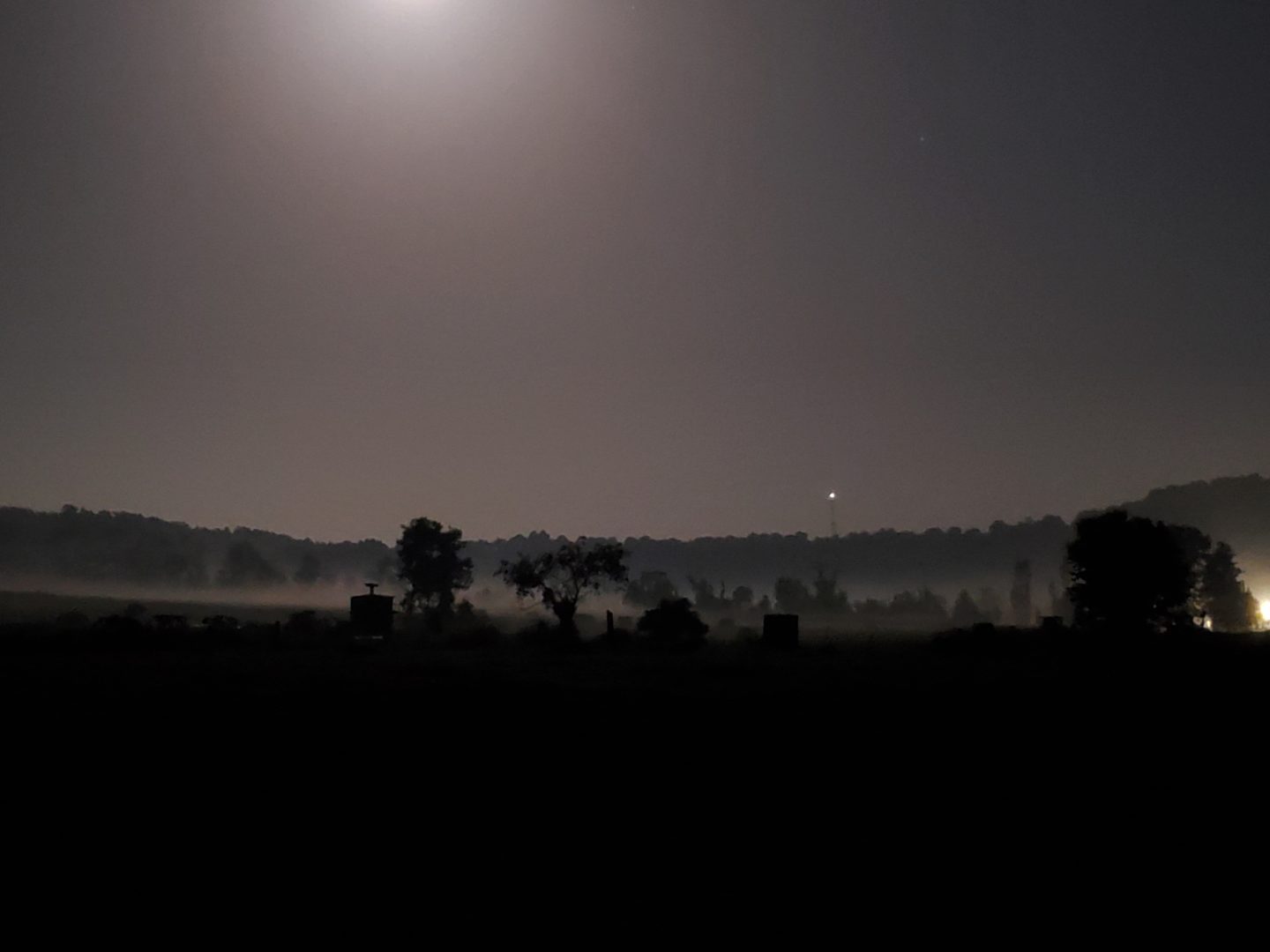
Nightjars and Mockingbirds: Why Birds Sing at Night
Dr. Jim Kellam, Associate Professor of Biology, Saint Vincent College
It was fair weather and close to a full moon earlier in the week and I took advantage of that to do a nightjar survey. The survey is a citizen-science project that nearly anyone can do, and it helps scientists find where these species live. Nightjars are the family of nocturnal birds that include Eastern Whip-poor-wills and Common Nighthawks. These species are well-camouflaged insectivores that spend the day near the ground in open habitats and then take flight at night to devour moths, stoneflies, flies, and many other insects. The bird populations are in decline due to habitat loss and probably also the slow decades-long disappearance of their prey that greatly worries me (but that’s another story).
I took a nap in the evening and awoke at 12:30am, a time coinciding with the rising of the moon. It took me about two hours to drive a pre-planned 9-mile route, stopping at each mile to listen for the birds’ calls. I followed the protocol developed by the Center for Conservation Biology and posted to the Nightjar Survey Network website. The timing of the survey was important; nightjars are more likely to call when the moon is overhead and bright. The starting point of my survey route was chosen for me, but from there I was free to go in any direction I wanted, as long as the survey points were spaced about equally over the route. My path took me through forested areas north of Jeannette, Pa., then through the city itself, and then south into open farmland. I didn’t mind passing through Jeannette because even urban areas can have Common Nighthawks. The Whip-poor-wills, though, would only be in rural areas, and both species are more likely to be calling in the dark hours around dusk and dawn than in the middle of the night when I did my survey. But how else would we know these things without doing surveys at all the hours of the night and in different kinds of habitat? [I have an answer to this question toward the end of my post, but first…]
Alas, I did not detect any nightjars on my survey. That’s good data for science, but not exciting for me. I didn’t even hear any owls. Did I get up in the middle of the night for nothing? Not at all. There were some deer to share moments with, and an opossum, and a shadowy figure just beyond my headlights that could have been a domestic cat; but I’d rather think it was a mink. There were also Northern Mockingbirds grandly singing at three of my ten survey points. Remember, it was two o’clock in the morning, and I was hearing mockingbirds sing their full repertoire of imitated bird songs. There was one that sang continuously for eight minutes before I left.
Besides the nightjars and owls, mockingbirds are known for nocturnal vocalization; as are several other songbirds around the world including the American Robin and several other thrush species, several warblers and the Yellow-breasted Chat, a few sparrows including the Field Sparrow, and the Nightingale. The Nightingale is a European species named for its nighttime singing. Scientific studies show that nocturnal singing by all these bird species has been shown to increases in frequency with greater illumination by moonlight or streetlights. Birds are more likely to sing during spring and summer when they are reproductively active, and unmated males sing the most. The timing and social context of the singing indicates that these birds sing at night for the same reasons they sing during the day: mate attraction, pair bonding, expressing interest in extra-pair matings, and territorial proclamation. All this sounds reasonable to me, but none of the studies I read have explained why some bird species do NOT sing at night. If there are reproductive benefits to nocturnal singing, then why don’t all birds do it? Clearly, we need more data.
Nocturnal bird surveys like the one I did could help, but a recent technology that PixCams has started using could also be used. If we deploy a network of BirdNET-Pi listening stations in numerous habitats and have the livestream audio analyzed continuously for all detected bird species, we can build a database of species that sing at night and the environmental context of those songs (such as light intensity, moon phase, and weather conditions). From that, we can document precisely when birds are singing and whether it depends on species, environmental conditions, season, and habitat. Maybe we will find more species sing at night than we know already. Maybe we will find that certain habitats create conditions more favorable for the evolution of nocturnal singing in the species that live there. The automated analysis will not tell us precisely which individuals sing the most (mated or unmated), but they could tell us something about the population density of each species at the device’s location, and from that we might see that nocturnal song is more common when population densities are particularly high or low. If so, it might not always be the species of bird that dictates whether or not they sing at night, but rather the proportion of individuals present that are unmated at any given time.

The Merlin Bird ID app is great for identifying bird calls/songs.
Thanks for sharing. I read many of your blog posts, cool, your blog is very good. https://www.binance.com/sk/register?ref=WTOZ531Y
Wow superb blog layout How long have you been blogging for you make blogging look easy The overall look of your site is magnificent as well as the content